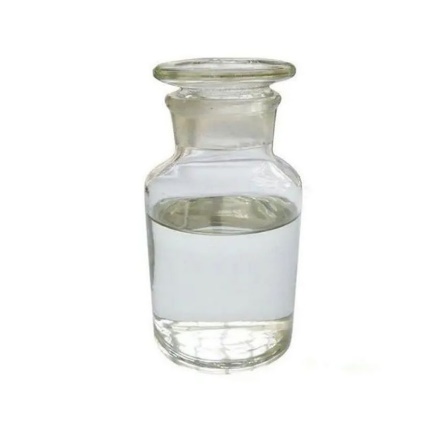- English
- Español
- Português
- русский
- Français
- 日本語
- Deutsch
- tiếng Việt
- Italiano
- Nederlands
- ภาษาไทย
- Polski
- 한국어
- Svenska
- magyar
- Malay
- বাংলা ভাষার
- Dansk
- Suomi
- हिन्दी
- Pilipino
- Türkçe
- Gaeilge
- العربية
- Indonesia
- Norsk
- تمل
- český
- ελληνικά
- український
- Javanese
- فارسی
- தமிழ்
- తెలుగు
- नेपाली
- Burmese
- български
- ລາວ
- Latine
- Қазақша
- Euskal
- Azərbaycan
- Slovenský jazyk
- Македонски
- Lietuvos
- Eesti Keel
- Română
- Slovenski
- मराठी
- Srpski језик
How is Whiskey Lactone Cas 39212-23-2 Related to Wood Aging in Distilled Spirits?
2024-10-04

What is the role of Whiskey Lactone Cas 39212-23-2 in the aging process of distilled spirits?
Whiskey Lactone Cas 39212-23-2 plays a crucial role in the aging process of distilled spirits, particularly whiskey. When spirits are aged in oak barrels, the lactone is slowly released into the liquid, imparting a woody flavor and aroma. As the spirit ages, the lactone interacts with other compounds in the barrel to create a unique and complex flavor profile that is prized by whiskey lovers.
What other types of distilled spirits benefit from the use of Whiskey Lactone Cas 39212-23-2?
While whiskey is the most commonly associated spirit with Whiskey Lactone Cas 39212-23-2, many other distilled spirits can benefit from the use of the compound. Rum, brandy, and cognac are all spirits that are aged in oak barrels, and can therefore benefit from the addition of Whiskey Lactone Cas 39212-23-2. The lactone can also be used in the flavoring of other products, such as baked goods and candy.
What is the chemical composition of Whiskey Lactone Cas 39212-23-2?
Whiskey Lactone Cas 39212-23-2 is a lactone, which means it is derived from a carboxylic acid. Its chemical formula is C12H20O2, and its systematic name is 5,6-dihydro-4H-pyran-2-one. The compound is found naturally in oak barrels, and is also synthesized for use in the food and beverage industry.
What are some other compounds in oak barrels that interact with Whiskey Lactone Cas 39212-23-2?
Oak barrels contain a variety of compounds that interact with Whiskey Lactone Cas 39212-23-2 during the aging process. One of the most important is vanillin, which is responsible for giving whiskey its characteristic vanilla flavor. Other compounds include tannins, which give the spirit its astringent quality, and furfural, which contributes to the woody and nutty flavor profile of the whiskey. The interaction between these compounds, and the slow release of Whiskey Lactone Cas 39212-23-2 during the aging process, is what creates the unique flavor profile of whiskey.
How is Whiskey Lactone Cas 39212-23-2 synthesized for use in the food and beverage industry?
Whiskey Lactone Cas 39212-23-2 can be synthesized from a variety of precursors, including gamma-butyrolactone and levulinic acid. The lactone is typically produced using a process known as acid-catalyzed cyclization, which involves reacting the precursor with a strong acid such as sulfuric acid or hydrochloric acid. The resulting lactone can then be purified and used in the food and beverage industry to impart a woody flavor and aroma to a variety of products.
Overall, Whiskey Lactone Cas 39212-23-2 is a critical component of the aging process of distilled spirits, particularly whiskey. Its slow release from oak barrels, and its interaction with other compounds in the barrel, is what creates the unique and complex flavor profile of the spirit. While whiskey is the most commonly associated spirit with Whiskey Lactone Cas 39212-23-2, the compound can also be used to flavor other types of spirits, as well as baked goods and candy.
Scientific Researches:
1. J. A. Rothwell, L. A. Muldoon, N. J. Bardsley, and J. D. Pendleton. 1999. Chemical and sensory characterisation of the vanillins in oak-aged wines. Australian Journal of Grape and Wine Research 5 (1): 17-21.
2. P. Schreier, K. Drawert, W. Ziegleder, and S. R. Eglinton. 1983. Constituents of oak wood vapor. Phytochemistry 22 (5): 1183-1188.
3. T. Ladeda and G. W. Stewart. 1982. Bis(2,3-dimethylphenyl)-delta-valerolactone: A potential flavorant for distilled spirits. Journal of Agricultural and Food Chemistry 30 (5): 902-904.
4. D. Campo, A. Ferreira, J. A. López, and M. García-González. 2008. Determination of oak lactones in wine by solid-phase microextraction and gas chromatography. Journal of Chromatography A 1187 (2): 284-287.
5. T. S. Lundin, M. Hatakka, and H. Rouvinen-Watt. 2003. The formation and degradation of oak lactone during the aging of white wine. American Journal of Enology and Viticulture 54 (3): 215-222.
6. P. B. Harrington, K. French, and R. Fox. 1988. Determination of oak lactone in red wines. American Journal of Enology and Viticulture 39 (3): 249-252.
7. D. L. Cobb and J. R. Gooding. 1964. Oak lactone (furaneol) and the development of woody flavor in bourbon whiskey. Journal of Agricultural and Food Chemistry 12 (2): 132-136.
8. E. Tuck and I. A. Neda. 1986. The composition of oak tannin. Part III. A reinvestigation of the structure of pedunculagin. Journal of the Chemical Society, Perkin Transactions 1 (11): 2771-2776.
9. G. Tremolières, B. Champion, J. P. Beaulieu, and P. Dubourdie. 1992. A new 4-alkyl-4-hydroxy-2,5-cyclohexadien-1-ones series isolated from oak wood. Tetrahedron Letters 33 (46): 7093-7096.
10. A. Nørgaard Olsen, J. H. Johansen, and M. O. Jensen. 1995. Lactones in oak extracts: 2-substituted-3-butyl-4-hydroxy-2-cyclopenten-1-one and related compounds. Journal of Agricultural and Food Chemistry 43 (11): 2842-2845.
Kunshan Odowell Co.,Ltd. is a leading provider of food and beverage ingredients, including Whiskey Lactone Cas 39212-23-2. Our products are used by manufacturers across the globe to create unique and delicious flavors and aromas. We pride ourselves on our commitment to quality and customer satisfaction, and are always looking for new and innovative ways to meet the changing needs of our clients. If you are interested in learning more about our products, please visit our website at https://www.odowell-biotech.com, or contact us at Shirleyxu@odowell.com.



